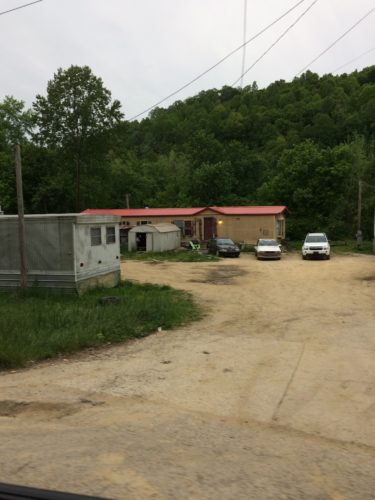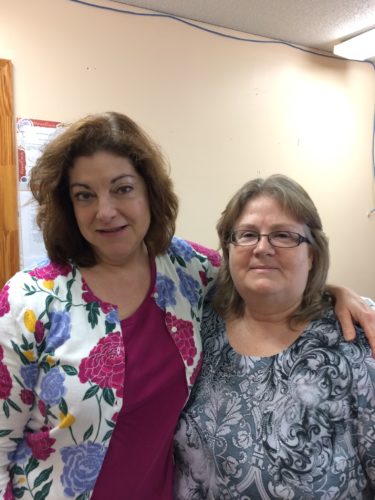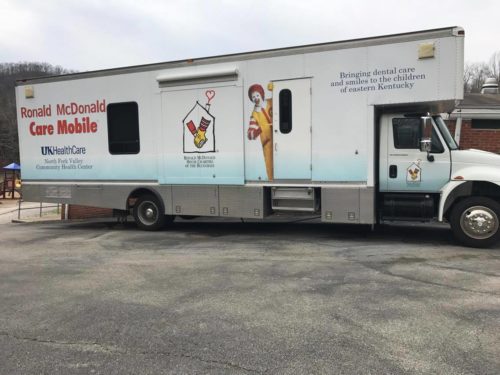After hearing story after story from her friend Hilary about child sponsorship through Children Incorporated, Kathy Niles decided she wanted to sponsor a child of her own. Little did she know that sponsorship would lead to unforgettable travels with her friend, getting to know several children – and an even deeper understanding of and appreciation for Native American culture.
We caught up with Kathy to find out about her experiences as a child sponsor, and about the impact those moments have had on her life.
SC: Tell us a little about yourself.

Kathy’s sponsored child in Arizona
KN: My home is in Ashaway, Rhode Island, and I am 64 years old. I have two children of my own, and was a single mom for most of their childhoods. I held several manufacturing jobs off and on, but finally started my own cleaning business fifteen years ago, of which I am the only employee.
It hasn’t been an easy road for me – especially career-wise. My grandmother used to say, “You have to have the bitter to appreciate the sweet!” The bitter can be very hard; but in many cases, it forms the mold in which one becomes stronger, more caring, and driven to work harder to succeed.
SC: How did you get involved with Children Incorporated?
KN: I learned about Children Incorporated through a friend of mine, Hilary, who was sponsoring a child in Appalachia. So in 2007, I sponsored my first child, Joel*, who attended the same school as Hilary’s sponsored child – and Hilary and I traveled to the school together to spend the day there and visit our sponsored children. It’s something any sponsor should do if they have the opportunity, because it was so rewarding, and I felt very blessed to have been able to visit the project.
In 2011, Joel moved to a different area, and that’s when I started sponsoring Chelsea* – and I have been sponsoring her ever since!
Hilary’s stories of Children Incorporated made me want to do something for a child in need; I didn’t have grandchildren, so I figured I would spend my money on sponsorship. And I decided that I would like to have the chance to help a child get ahead, and to have the chance to fight through their struggles to go on to college and better themselves.
SC: How many children have you sponsored through Children Incorporated?
I decided that I would like to have the chance to help a child get ahead, and to have the chance to fight through their struggles to go on to college and better themselves.
KN: I followed Hilary’s lead and started sponsoring children on the Navajo Reservation, too. Some of them have moved away, so I have had a few different ones there; but I don’t want stop sponsoring there, because I feel bad for these kids that need help.
SC: When you signed up, did you specify preferences for your sponsored child?
KN: Yes – originally, I wanted a sponsored child in Appalachia; I started sponsoring in the Navajo Reservation when I decided to add an additional sponsorship.
I visited the Shonto Preparatory School in Arizona with Hilary, who was traveling there to see her sponsored child graduate high school. It was a very inspirational, rewarding experience for me. In this world stricken with poverty and strife, there is a strong family bond that I noticed, and we were welcomed and accepted – even as minorities.
That’s when I decided to sponsor a Native American child, too. I just recently received information on a new child there, and I am hoping that this will be a lasting relationship, for as long as she is in the school.

Kathy also sponsors a young girl in Kentucky.
SC: Is there anything more you can tell us about the projects you have visited?
KN: The volunteers at the schools are people that give of their time, hearts, and souls to help.
SC: Please tell us about the children you currently sponsor.
KN: Chelsea in Appalachia is fifteen and in the tenth grade; she lives with her mom and four sisters, two brothers, and some cats. She likes playing games, and is good at building things – and not surprisingly, she wants to be a mechanical engineer when she grows up!
I would love to be able to go to her high school graduation; that is my goal. And I would love for my kids to join me when I do. I pray that Chelsea continues to do well, and that she finds a special interest that she can pursue for her future. She is a beautiful young woman; I always get a new picture of her every year.
And Cari* in the Navajo Reservation is also in the tenth grade, and enjoys studying global issues in school. She likes to listen to music, and she’s good at singing; she especially likes the music of singer-songwriter Ed Sheeran. She lives with her mom, and has two brothers and one sister – and she wants to be a veterinarian when she grows up!
SC: Do you communicate with them regularly?
KN: Yes – I send them packages and letters. I send Chelsea money for her birthday, back to school, Christmas, and sometimes in the spring. I also buy her school supplies and hygiene articles; and I know she likes to read, so I have gotten her a gift card to Barnes and Noble. And every once in a while, I get a thank-you note from her, and it always touches my heart!
SC: What do you know about Arizona?
For those who can afford to help, I strongly suggest that you give to a child in need. It can and will make a huge difference in their lives and in their future; it will help mold them into strong individuals.
It was an eye-opener to go to Arizona and see children in their native regalia, and to hear children speaking their native language; it was beautiful!
SC: Is there any advice you might have for someone considering sponsoring a child?
KN: Children Incorporated is a great program, and it has helped many. For those who can afford to help, I strongly suggest that you give to a child in need. It can and will make a huge difference in their lives and in their future; it will help mold them into strong individuals.
I pray that my help has touched each one of these children that I have at some point given to.
*Names changed for children’s protection.
***
HOW DO I SPONSOR A CHILD IN APPALACHIA?
You can sponsor a child in Appalachia in one of two ways: call our office at 1-800-538-5381 and speak with one of our Sponsorship Specialists, or email us at sponsorship@children-inc.org.
HOW DO I HELP CHILDREN IN ARIZONA?
You can help children in Arizona in one of two ways – our Hope In Action Fund provides for children in special cases, such as in emergencies, and when special items, like eyeglasses, mattresses, and bedding are needed. Our Warm Clothing Fund and our Back to School Fund support children in the Navajo Nation as well.





